If you are creating an online marketing strategy for your business, chances are you have explored both YouTube and TikTok. There are pros and cons to using both platforms, and there are distinct differences in the content being published on each site. In creating a marketing strategy, business owners should research how to successfully use each platform to its full capability. But when you put them against each other, YouTube vs TikTok, which one would win?
YouTube all but started the online social media revolution. People have been publishing videos on YouTube for decades now. In more recent years, YouTube developed its own streaming content, which has been incredibly successful with 2.1 billion monthly active users and is increasing every day.
YouTube’s analytics deliver search results that directly match the searcher’s query. For example, if you were looking for a video about “How to fix a leaky faucet” you are going to see videos with 1.) titles that closely or exactly match your searched phrase, and 2.) videos with the longest “watch time”, or the average length of time users watch the video. This allows you to get quick access to the most engaging content that effectively meets your needs.
YouTube Kids is an entirely kid-safe version of YouTube that features episodes of kid’s television shows, clips of classic and contemporary kids' songs, education-focused clips from sources like Khan Academy and PBS Kids, and regulated user-created content. This platform can give parents peace of mind to let their kids explore and enjoy content created by and for kids.
Despite developing more kid-friendly content, YouTube’s demographic is typically older than other social media and content-sharing sites. Their largest viewer demographic is people ages 25 to 34, who make up about 21% of YouTube’s total ad audience. Additionally, almost 20% of YouTube’s viewers are 55 and older. Engaging older adults online is a difficult task, so it’s essential to know where they are spending their time.
Digital censorship is not specific to YouTube, but since the platform is owned by Google, some content creators are being “demonetized” for reasons they deem unfair. It’s the classic argument of freedom of expression vs. private companies dictating the content they publish. Some find it difficult to navigate, but it’s important to understand publishing terms and conditions before investing your time in creating content.
In an effort to keep up with Instagram Reels and TikTok, YouTube launched Shorts in 2020. These short videos are limited to 60 seconds, however, Instagram Reels and TikToks can last 2-3 minutes.
Tiktok was launched in 2016 to revolutionary fanfare. In 2022, TikTok was the 2nd most downloaded app in the entire world, second only to Instagram. Now, TikTok has over 1.677 billion users globally, of which 150 million are from The United States.
There is no content creation site that has captured Gen Z’s attention like TikTok. Historically, the 18–24 age demographic has been difficult to engage. In fact, 1 in 4 TikTok users are under 20 years old and the majority of TikTok creators are aged 18 to 24. So understanding TikTok is essential to engaging younger audiences.
TikTok’s predecessor, Vine, revolutionized short-form content. Vines had a 7-second limit, which made it a unique challenging to create content that was engaging enough to go viral. But Vine walked so TikTok could run: content published on TikTok can last up to 3 minutes, although content published by accounts with over 25,000 views averaged about 42 seconds.
Even though the public seems to love TikTok, governments around the world are not fans of the platform. All over the globe, there are concerns that TikTok, which is owned by the Chinese company ByteDance, could give the Chinese government access to sensitive user data.
Last year, President Joe Biden signed into law the No TikTok on Government Devices Act. Pretty self-explanatory, but this act prohibits downloading TikTok on any government digital devices for fear of security breaches. While TikTok could be a great help in marketing your business, these security concerns, as well as the global government’s disdain for the app, are something to keep in mind.
Overall, there are pros and cons to using both YouTube and TikTok. Each platform has specific content creation parameters, monetization tools for content creators, and analytic tools.
When it comes to successfully marketing your business, one platform might work better for your specific needs than the other. Do your research, gain an in-depth understanding of your target audience, and spend your time online effectively and wisely.
For more information about YouTube vs TikTok and how to utilize each platform, check out this livestream on YouTube hosted by our CEO and Co-Founder, Dr. Ryan Lowe.
Keeping up with the latest online trends is a tricky business. Instead, rely on design and marketing experts who can save you time, money, and effort. Contact us to learn how our award-winning marketing and design team can help your business grow.
Happy birthday to us! energyhill has just celebrated our 10 year anniversary! We are incredibly excited to have reached such a meaningful milestone and are grateful to our clients and partners for supporting us. In celebration of our birthday, we wanted to take you through 10 lessons learned from 10 years working in the marketing industry.
In 2013, energyhill was born! But starting a new business is overwhelming and nerve-wracking. Where do you start? What is the key to success? What if you fail?
At energyhill, we believe in the power of “learning by doing”. There is nothing wrong with making mistakes, because mistakes are how you learn. Once you take that first step, everything will come together through your hard work and willingness to learn.
We were fortunate to have great clients in our portfolio from the start, mostly from our years working as freelancers. When we formally opened energyhill, one of the best decisions we made was setting up a robust support team right off the bat. The quality support and communication we provided to our clients from the beginning were essential to building our long-term success.
Sometimes clients who enlist a design and marketing company’s services have little to no experience in the field. So laying out a clear and organized project plan for them is essential. We pride ourselves on having honed a tight process for designing, revising, and implementing our clients’ projects.
Chances are you have heard the term “work-life balance” before. We have made it a priority to balance our personal lives with our business. Be realistic about maintaining this balance, especially because starting your own business requires a lot of sacrifices. It’s essential not only for your personal health but for the wellbeing of your family and your business.
This might sound harsh, but it is necessary! Take your time to hire the right people for your team. Prioritize finding people who will fit the team dynamic and who will enthusiastically show up for the work. And if you feel that someone just isn’t the right fit, have faith that you know your business better than anyone. Make the choice to let them go so that 1.) they can find an opportunity better suited for them and 2.) you can find the right person for that role.
There is a ton of competition in the marketing field, so it was essential for us to set ourselves apart. Our team is consistently looking for ways to innovate and take our clients to the next level. We look for ways to create new business processes for our clients, advise them on creating new products, and help them build better methods of engaging their clientele.
This lesson goes hand in hand with setting realistic priorities. Once that step is taken, you quickly realize that there are moments when you have to step away from the work. Learning to let go and delegate is crucial: You cannot ALWAYS be involved with every single project your team has in development. So that is why it's so important to build a strong team; let them carry the work when you have to take a step back and attend to personal matters.
2020 was certainly a year of… surprises. At energyhill, we took pride in the pivots we made during the height of the COVID-19 pandemic. In building our business model and project plans, we keep the VUCA principles in mind: VUCA stands for Volatility in the market, Uncertainty, Complexity, and Ambiguity. You can create the most comprehensive and detailed project plan possible, but you simply cannot account for everything that might go wrong. You have to be ready to innovate at a moment's notice; anything can happen!
After we joined C12, a Christian entrepreneur peer group, we realized we should have joined sooner! This group has helped us review our curriculum, compare experiences, and have camaraderie with other professionals in our field.
Open yourself up to networking and collaboration opportunities. You can learn so much, gain valuable experience and contacts, and get a new perspective on the work you’re doing. It can be essential for the growth of your business and the quality of service you provide to your clients.
energyhill’s Co-Founder, Gloria Lowe, has worn many hats over the past 10 years, but her role has been fluctuating quite a bit recently. We made the decision to change her title from Creative Director to Chief Wellness Officer. While she still leads the creative work, we wanted to qualify the work she does to develop our team in a more concrete way.
Creating this role solidified what has actually always been part of our vision. We sought to create a healthy and happy working environment for our employees and a high standard of business for our clients. We are thrilled to say that we have pulled it off in spades!
As for this year, we have the strongest team we have ever had and are excited about the work we are doing. We leaned into the podcast world and have been sharing marketing tips and tricks on social media (make sure to follow us for the latest!). Even though 10 years have passed, we feel like this is still only the beginning. We’re excited for the next chapter; stay tuned to see what we have in store!
To hear more about energyhill’s decade-long journey, check out our podcast recording on Youtube hosted by energyhill co-founders, Ryan and Gloria Lowe.
After 10 years in business, energyhill continues to operate at the top of its game! Relying on design and marketing experts can not only simplify the process but also save you time, money, and effort. Contact us to learn how our award-winning marketing and design team can help your business grow.
If you are a business owner, you certainly know the importance of website data analytics and how they inform your marketing strategy. Being knowledgeable about the who, when, and where of your target audience is central to the growth of your business. And an integral part of getting the whole picture is understanding dark social and its implications on your business.
Is dark social as ominous as it sounds? Thankfully, no: “dark social” encompasses all the social media activity that traditional website analytics can’t track. Even if you have great traffic on your website and an active content sharing module, there is some traffic that you are not capturing because it is being shared via messenger apps or texts.
Dark social was brought into the spotlight after the launch of Apple’s iOS 14 update, which offers users the option to opt out of data tracking across apps. While many iPhone users were delighted at the prospect of having more privacy, marketers were left with significantly less information about their audience’s demographics.
This shift has made dark social more powerful than ever, in large part because it represents the more personal nature of how content is being shared. Being able to capture this method of content sharing is instrumental for business owners: What specifically sparks your audience to share your content with someone they know? This helps you better understand your audience and what aspects of your content are most engaging.
Despite the popularity of social media apps like Instagram and TikTok, the fact is that that is not how the majority of people share information with one another. In fact, 84% of website sharing now takes place via private channels such as email and instant messaging. All of that traffic is dark social, which means that only 16% of content consumption and sharing takes place in traditional social media settings that are tracked by website analytics. While the efforts being made to track Instagram and TikTok engagement are certainly valuable, they don’t tell the whole story of who is consuming your content.
The largest source of dark social content sharing is messenger apps. Here is a list of the most popular messenger apps, based on the number of users:
Based on this, it would benefit business owners to attempt to tap into this aspect of content sharing and open up new avenues of audience engagement.
Dark social doesn’t have to stay in the dark. There are many ways in which business owners can try to engage this aspect of their target audience.
For more information about dark social and its impact on your website’s traffic, check out this video on Youtube hosted by energyhill CEO and Co-Founder, Dr. Ryan Lowe.
Developing a creative, high-traffic website can be complicated. Instead, relying on design and marketing experts can not only simplify the process but also save you time, money, and effort.
Contact us to learn how our award-winning marketing and design team can help your business grow.
We’re honored to share that our website redesign for Fork Union Military Academy has recently received a Silver w3 Award for Website Redesign and a Marcom Award Honorable Mention in Digital Media Website for an Educational Institute! We’re thrilled to know that our creative design and skills have been recognized by other industry leaders.
As a college prep and military school that has been around for more than 100 years, Fork Union Military Academy has a rich history that we wanted to incorporate into the website.
Our first goal was to clean up and rebuild their sitemap so that users could navigate the site with ease. Next, we created a color palette and custom icons for a brand design that was both bold and refined and matched the school’s incredible legacy.
All of this and more led to a brand new website that shows that Fork Union Military Academy is an elite school with a strong foundation. As a result, they now have a website that is drastically faster, SEO-optimized, and attracts more families.
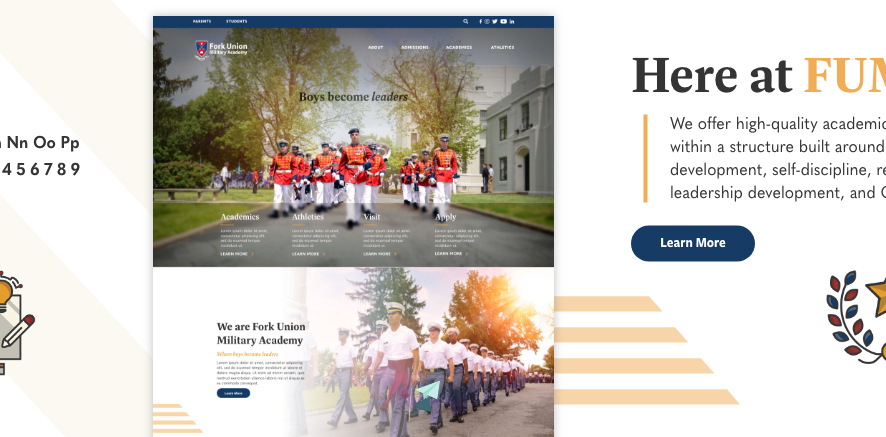
The w3 Awards are judged by the Academy of Interactive and Visual Arts and are open to agencies of any size. Each year, the w3 Awards recognize the greatest websites, videos, mobile sites, apps, social media, podcasting, and marketing.
Likewise, the purpose of the Marcom Awards is to recognize and reward outstanding achievements in the marketing and communications fields. Receiving these awards demonstrates our commitment to providing great services to all of our clients in all industries.
Need marketing or design help for your business? Our team is eager to work with you and get your project started! Contact us today to schedule a meeting.
For your business to connect with current and potential customers, you need to build and maintain a website that works. If you are not getting good traffic on your website, here are 5 reasons your website performance may be poor and what you can do to ensure that you reach your target audience.
One reason your website's performance is struggling is because your webpage is not mobile-friendly. According to Google Search Central, 94% of people with smartphones in the U.S. search for local information on their phones. Even when people are at home with access to laptops and desktops, they are still browsing on their mobile devices.
So, if your ideal client or customer finds your website on their phone and the formatting is not compatible with their device, they’re unlikely to stay for too long.
If you don't know how to build a website or write code, ask a professional to help you build and format your content in a way that will engage your target audience.
Another reason why your website might not be getting a lot of traffic is that you’re not using the best keywords in your content. For example, if you are opening an ice cream parlor, you’ll probably want to use words like “ice cream", "homemade”, and "creamery” in your headlines and social media captions. This will help potential customers find your business when they search for ice cream parlors in the area.
Work with your creative team to find out what keywords best represent your business. Make sure to use those keywords frequently on your website and incorporate appropriate hashtags on your social accounts.
This concept goes hand in hand with keyword research. Marketing professionals use a strategy called SEO marketing when writing website content for their clients. SEO stands for “search engine optimization”, which essentially asks the question “What are you doing on your website that helps search engines find you?” SEO is the strategy behind creating and publishing the most effective and searchable content pieces on your website, which will expose your business to the public on a larger scale.
Having an SEO and content plan in place is essential to keeping your audience engaged in your content and increasing your visibility on social media and search engines.
A dysfunctional website that is not user-friendly can drive potential customers away from your business. Make sure you use a reliable platform for building websites to make sure your website is always up and running. And incorporate multiple security measures and firewalls to protect your business’ and clients’ stored information.
Use tools like Google Analytics to continually monitor your website’s traffic and engagements. A high bounce rate (the number of people who only look at your homepage and then leave) or a low average session can show that something on your website isn't working right and needs to be fixed.
Designing an engaging and aesthetically pleasing website helps to ensure that people engage with your content. Make sure that your website display does not have stark contrast or harsh colors, like bright red font over a purple background.
You want your website to reflect the quality service and products that you provide, as well as the professionalism of your business. You don’t want users to click away simply because they do not like the font style you chose.
If design is not your strong suit, marketing professionals can help you. They can transform your business’ message into a curated and visually appealing website that will engage your target audience.
For more information about optimizing your website's performance and engaging with your target audience, check out this livestream on YouTube, hosted by energyhill CEO Dr. Ryan Lowe.
Developing a creative, high-traffic website can be complicated. Instead, relying on design and marketing experts can not only simplify the process but also save you time, money, and effort. Contact us to learn how our award-winning marketing and design team can help your business grow.
If you're marketing a business in the age of technology, chances are you've heard the terms SEO and SEM. But what's the difference between SEO and SEM? And how can understanding and utilizing both of them help promote your business online?
SEO stands for “search engine optimization”, which essentially asks the question, “What are you doing on your website that helps search engines find you?”. It’s the strategy behind planning and creating organic content with relatable keywords and user-friendly designs to garner traffic for your site. A great SEO strategy will steadily build your brand's credibility and make it easier to rank on search engines, which will expose your business to the public on a greater scale.
SEM, on the other hand, stands for “search engine marketing.” In essence, business owners pay for their ads to appear at the top of the list of search engines. It's more of a “pay as you go” expense where business owners use their ad budget on platforms like Google or Facebook and pay per click/engagement. This is a great way to ensure that your targeted ad gets seen, but it's more likely to be successful on SEO-friendly websites.
Unlike SEM, you don't have to pay for good SEO. However, it will take a lot of time to build that plan and put it into action, so it may be better to hire professionals to create and push an effective plan. Ultimately, both SEO and SEM rely on keyword research, but they use different tactics to drive traffic and create results.
One common misconception regarding SEO and SEM is this idea that one can work better than the other. In fact, both tactics can be used in tandem and are actually stronger together. energyhill CEO and Co-founder, Dr. Ryan Lowe, says that SEO and SEM are like two pillars holding up one structure; they are both equally important and each play their own role in supporting your business.
The linchpin of an effective SEO and SEM strategy is to find the keywords that people are using on search engines when they search for the goods or services that your business provides. The idea is to put your business in their path and let people know how your business fulfills their needs. A sure-fire way to accomplish this is to be sure that 1.) your ad campaigns include related keywords and 2.) you have a plan to publish content on your website and social accounts routinely.
Enlisting the help of a marketing and design agency can help business owners benefit from these strategies. Professional content creators can help you optimize the perfect combination of calculated leads based on good website content (SEO) and good ad spending strategy (SEM) for your business.
For more information about SEO and SEM, check out these informative videos hosted by Dr. Ryan Lowe. He will take you through the nuts and bolts of SEO and SEM, how to create and use both strategies in marketing your business, and provide examples of successful campaign tactics used by the design team at energyhill.
Developing a SEO and SEM strategy can be a confusing and time-consuming process. Instead, relying on a marketing expert can not only simplify the process but save you wasted time, money, and effort. Contact us to learn how our award-winning marketing and design team can help your business grow.
Why is customer engagement so important and how does it influence every part of your business? It’s simple. Every successful customer interaction that improves their experience is a success for your company.
Customer engagement illustrates your business’s dedication to your customers, adds value to your brand, and encourages customers to return to your business.
In addition, engaging customers provides invaluable customer data and opportunities for growth. Despite this, studies show that businesses haven’t dedicated enough time to improve their online customer service. Almost 80 percent of companies believe that they provide excellent social media customer service. However only 8 percent of their customers would agree.
Here are a few ways to develop your customer engagement strategies and why they work. We'll go into more detail on each below
Personalized customer service is the best approach to customer satisfaction. This can be challenging for businesses if they are unable to envision their customers' experience.
Mohanbir S. Sawhney, a clinical professor of Marketing at Kellogg School of Management, proposes that businesses develop a customer experience DNA for visualization. This process can assist businesses to help clarify what areas of their customer experience requires more personalization and investment. Before creating a new marketing strategy for your business, generate a baseline before implementing the plan. With this baseline, you are able to accurately compare the results.
Why is building a customer service platform important for your brand? Communication directly influences your business’s success and can be a great tool for brand growth. Additionally, customer satisfaction is key for acquiring new customers and retaining current clients.
In fact, a report completed by Microsoft State of Global Customer Service revealed that 60 percent of customers stop doing business with a brand after one poor service experience. Creating a customer service platform provides an opportunity for customers to quickly and easily resolve any issues or concerns they may have.
How can businesses increase customer satisfaction and retain customer loyalty? Businesses or other software can supply flexibility for your business to develop a customer service platform. This way, you can ensure you're staying on top of the company’s customer needs. In addition, produce help materials so customers can readily assist themselves with simple queries. Monitor customer communications on a regular basis and develop a system to identify critical concerns and generate orderly responses.
Create a Facebook group or another social media community for your customers to connect with and invest value into your community. Host Q&A sessions, run giveaways, or create blogs that provide an opportunity for customers to engage with your business. The end goal should be to create a dialogue with your audience. A study completed by HubSpot showed that 81 percent trust their friends and family’s advice over advice from a business. In addition, 71 percent of consumers who've had a good social media service experience with a brand are likely to recommend it to others.
Communication — not just automatic replies, but real human communication — is vital for a successful and engaging community. Research shows that social networks are the biggest source of inspiration for consumer purchases. To illustrate this, one study showed 37 percent of consumers find purchase inspiration through social channels.
Don’t just create content that promotes your products and brand. Specifically, create content that allows your community to interact with you in unique ways. Such as a question, poll, or asking expressly for feedback. Interactive content encourages customer engagement, keeps the customer’s attention, and improves customer appreciation.
Quizzes, polls, interactive videos or tools can provide relevant data and insight into modern trends. These features should be a part of your overall social media strategy to continue engaging with customers online. Coupled with a strong engagement plan, the information you collect from your audience can be used in many ways. Of course, as you continue to create more targeted content, you will find what works best, what gets more shares, and how people are connecting.
These are already uncertain and frustrating times, don’t further complicate it by responding late or unsuccessfully to customer’s inquiries. Social media not only provides customers with insight into your brand, but it also allows instant communication.
Businesses should monitor their social media to consistently assist their customers. Prompt responses to posts and comments appease confused or disgruntled customers and also demonstrates the company’s dedication to your social media following.
Approximately 50 percent of consumers reported that seeing user-generated content would increase their chances of buying products through a brand's social media. It's important to remember to always involve
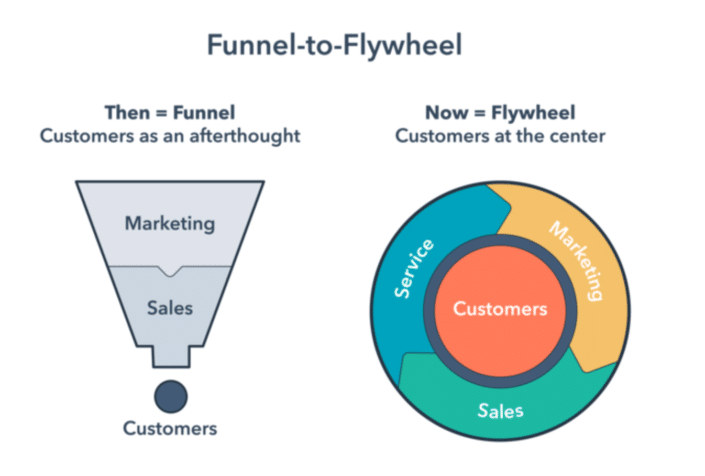
In general, we think of the HubSpot flywheel. The wheel shows how your marketing efforts, engagement, and customer feedback are all connected and should work in tandem for your best results. As HubSpot partners, we use the wheel to guide much of what we do to help our partners.
Are you aiming to improve your customer engagement? It can be a journey to improve engagement. In the long run, it will greatly benefit your business to put your interactions with customers first. At energyhill, we have the tools you need to help you connect with your customer’s needs.
Contact us to assist in developing new marketing strategies to reach your business goals. Learn more about what we can do for your company, call today for a free quote or contact our team and we’ll be in touch.
We're merely halfway through the year and energyhill has already seen many changes. To begin with, the creative marketing agency welcomed the new year in a new location. The new office has an open space concept that fosters collaboration among team members and boosts creativity. However, one of the biggest happenings this year is energyhill winning three awards! The awards are in the categories of Digital Marketing; Public Relations and Communications; and Marketing and Communications. Our team is proud and thankful for all the hard work that resulted in this recognition.
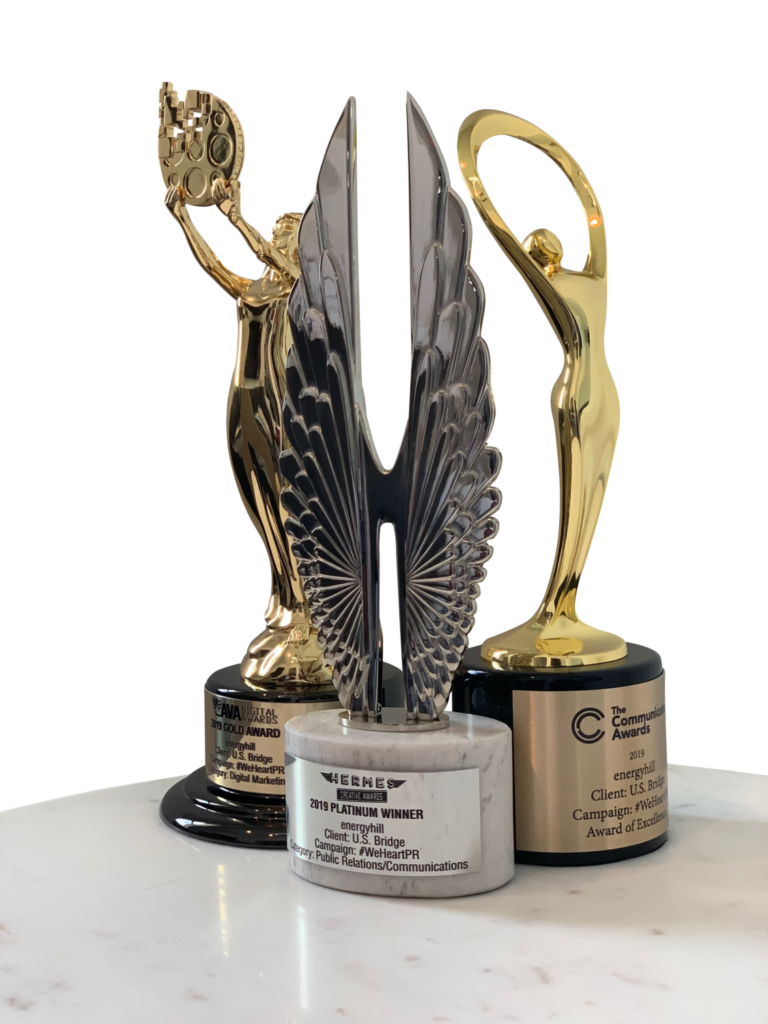
energyhill has been helping organizations with creative marketing solutions since 2013. One of them is U.S. Bridge, a steel bridge manufacturing company based in Cambridge, Ohio. After Hurricane Maria hit Puerto Rico, U.S. Bridge acted quickly to contribute to hurricane relief. They provided five steel bridges in five different communities throughout the island. This was a monumental project that would not only enrich U.S. Bridge's portfolio, but also respond to a humanitarian call for help. energyhill saw an opportunity and created a full marketing campaign for the project.
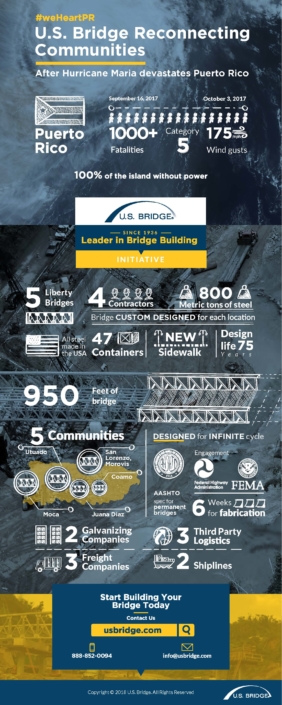
The marketing campaign included the following:
energyhill called the digital campaign #WeHeartPR. A title that not only shows the emotional attachment, empathy, and focus on the island, but also allows the audience to connect with it. This strategy of using the hashtag as a title for the project took into account the mediums that would be used to bring awareness of what the island was going through. It gave the audience a way to engage with and follow the project on all social media platforms.

energyhill won the Hermes Creative Awards Platinum award in Public Relations and Communications. This is an international competition that evaluates and recognizes creativity, design and technology of campaigns.

Communicator Awards is a leading international awards program that recognizes creative work in marketing and communications. energyhill won the Award of Excellence in the Campaign-Cause Marketing category.

The AVA Digital Awards honors the work of creative professionals in the planning, concept, direction, design and production of digital communication. These awards recognize excellence in digital creativity, branding, and strategy. Thus, energyhill was awarded Gold in Digital Marketing.
The convergence of compelling content and creative digital arts yielded energyhill the three awards that honor creative professionals in Marketing and Communications. The team is proud of the work, which resulted in a campaign that brought awareness to a good cause and reflected the work done by U.S. Bridge. Furthermore, it was a campaign that was carefully created and executed to meet the high quality standards of U.S. Bridge. energyhill prides itself on its work and passion for creating pieces that will impact the audience and make change happen. Contact us today to talk about how you can benefit from creative marketing.
Mobile technology has changed the social world. Not only has it altered the way we communicate and interact with each other, it has also greatly affected consumer behavior. In order to capture sales, retailers have created a dual path on mobile devices via sites and apps; thus, no matter how consumers prefer to purchase, they have an easy solution. Understanding consumer behavior and how shoppers use their mobile devices is now critical in conquering the path to purchase.
According to a study by Google Marketing Insights, nearly half of U.S. consumers with mobile phones use their devices weekly to shop. One in ten people states that they shop via mobile daily. These are huge numbers, especially when coupled with the fact that 60% of consumers use a mobile website to shop. Despite the proliferation of apps, it seems that a user-friendly mobile website is preferred by shoppers.
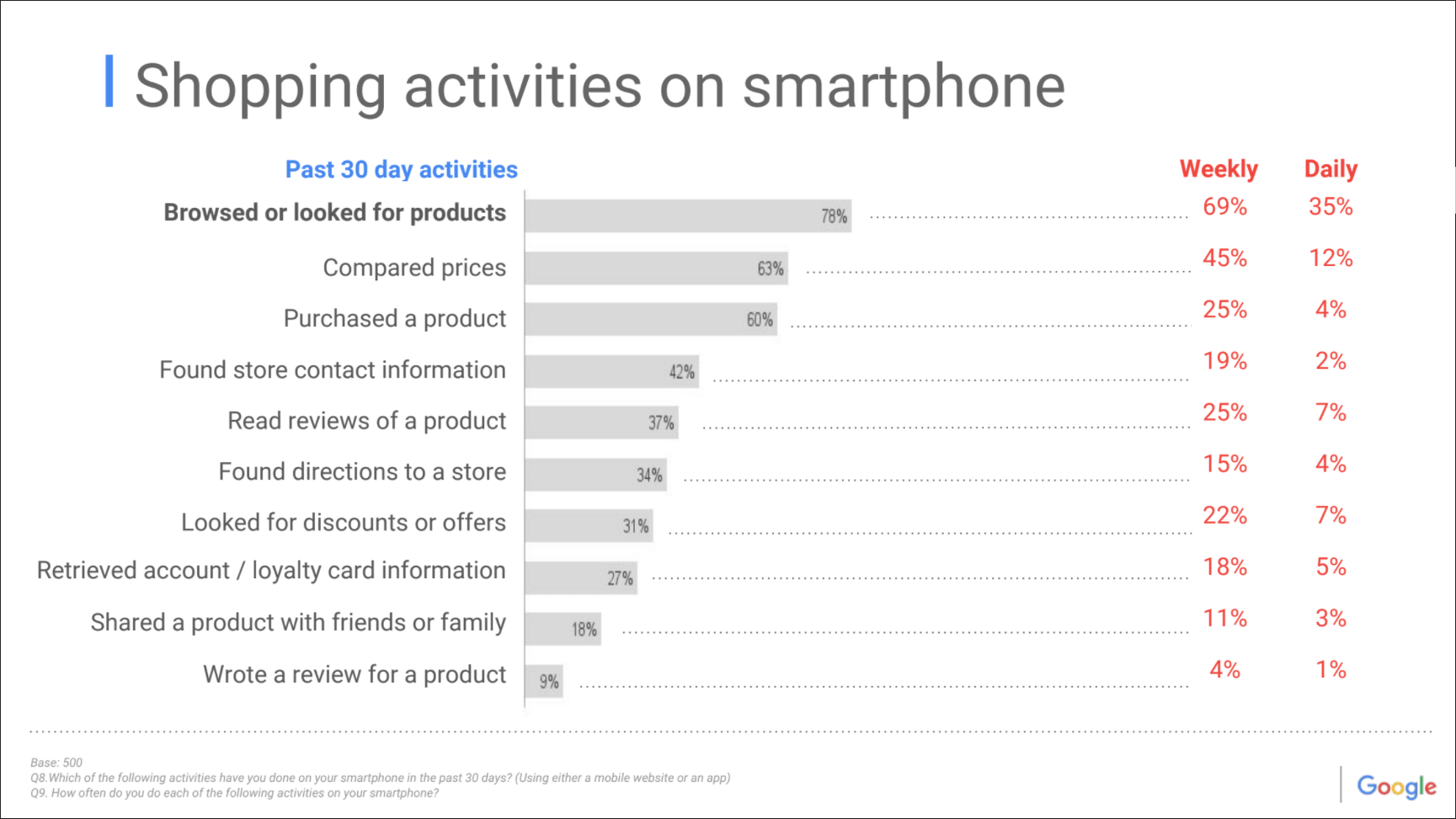
In general, mobile shoppers find that mobile websites offer more information. While 64 percent agree that shopping apps load quicker and 60 percent say they are easier to navigate, the path to purchase seems to flow more easily through a mobile website. This makes a strong case for all retailers having device agnostic or responsive websites. Having a website that scales based on device is key to capturing a majority of shoppers.
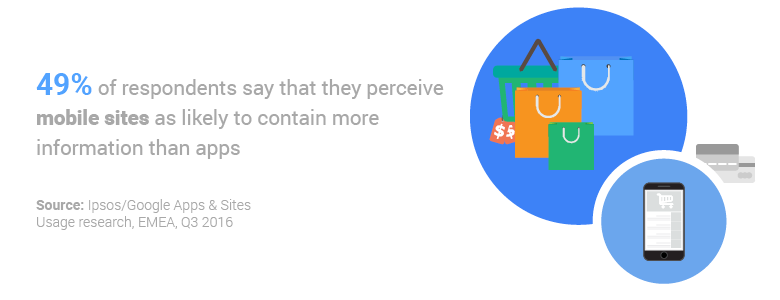
If a retailer is interested in making sure their app is part of the path to purchase, including special discounts or exclusive deals via the app seems to be the way to go. Thirty-five percent of mobile shoppers state they download apps specifically for discounts. Additionally, making sure the app is secure will also ensure more consumers use it; more than 70 percent of smartphone owners who download apps cite security as a deciding factor.
If you're looking for ways to streamline your path to purchase or simply want to learn more about mobile- and app-based shopping trends, please contact Energyhill today. Our team of expert marketers is ready to help you capture and cash in on this mobile revenue stream.
Competition for consumers and their hard-earned dollars appears to be at an all-time high. Gone are the days when an ad in the Sunday paper or a banner campaign across the web's top 5 sites would garner you the ROI needed. Now with media options on the rise - and changing every day - it's difficult for brands to know where and how to spend their money. Here are some trends to look out for in 2017.
While there is no doubt that online and mobile advertising are still very useful to brands, click-thru rates on banner ads have declined to a paltry 0.06%. And to make it worse, the adoption of ad blockers is up to 41%. This number is even worse among the millennial generation where 2 out of 3 millennials claim to use an ad blocker.
Craving connection, advertisers tried a new tactic - one that would go above and beyond a simple banner ad: native advertising. This immersive experience was meant to provide relevant content to the user while underscoring the product or service that sponsored the content. Many media outlets found native advertising a boon as it generated content for them while also selling ad space. It was a win-win.
However, as with most shiny new things online, native advertising began to lose its appeal and now it seems that we have moved onto native advertising 2.0. This new version of native advertising will be more visual in nature and will endeavor to provide users with a seamless experience. Also, it will attempt to grab their attention with arresting visuals.
Humans process visual images 60,000 times faster than text. And over 80 percent of people only skim the online content they read. This makes visual advertising even more important. To capitalize on this trend, marketers will start to focus more on images and typography than content. Visual advertising will make it more important to grab the consumer's attention than to keep it.
How do you see your organization incorporating visual advertising in 2017? If you're interested in learning more, please contact us today for more information.